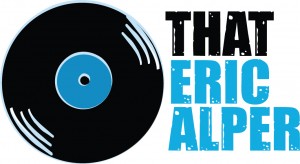Before The Score, the Fugees were underdogs. After it, they were global icons. It’s the album that gave us Killing Me Softly, Fu-Gee-La, and Ready or Not, but behind the chart-topping hits and platinum certifications, there’s a story of struggle, improvisation, and genius. Let’s dive into five facts you may not know about this groundbreaking hip-hop masterpiece.
1. The Basement Studio That Built a Classic
Most legendary albums are made in million-dollar studios. The Score? It was born in a basement. The Fugees set up shop in Wyclef Jean’s uncle’s basement, which they called the Booga Basement, and recorded the album on a $135,000 advance. The setting wasn’t glamorous, but it gave the album its raw, organic energy. Wyclef described the process as “calm and unconscious,” with ideas flowing naturally rather than being forced. The basement became a melting pot of creativity, where live instrumentation met intricate sampling, crafting a sound that felt as fresh in 1996 as it does today.
2. The Song That Almost Didn’t Happen: “Ready or Not”
One of The Score’s most iconic tracks, Ready or Not, was almost stopped before it even hit the airwaves. The song heavily samples Enya’s Boadicea, but the Fugees didn’t clear it before release. Enya was prepared to sue—until she found out the Fugees weren’t gangsta rappers. She reconsidered and let them use it, making it one of the most famous accidental collaborations in hip-hop history. Even more incredible? Lauryn Hill recorded the song’s chorus while crying in the studio, delivering a vocal so raw and emotional that the group decided to keep the first take as the final version.
3. How a Fat Joe Beat Sparked “Fu-Gee-La”
Producer Salaam Remi had created a beat intended for Fat Joe, but fate had other plans. During a session, Wyclef asked him to play “the Fat Joe beat,” and as soon as he did, Clef jumped in with the first verse of Fu-Gee-La. The track came together spontaneously, setting the tone for the entire album. While The Score would go on to incorporate more live instrumentation, Fu-Gee-La remained a perfect fusion of sampled melodies and gritty rap energy. The song became their highest-charting U.S. single and later inspired The Weeknd’s Sidewalks and Jay-Z’s Moonlight.
4. The Expensive Music Video That Changed Hip-Hop
At the time, hip-hop videos were often straightforward, but the Fugees changed the game with Ready or Not. Directed by Marcus Nispel, the video had a reported budget of $1.3 million—making it one of the most expensive rap videos of the era. Set against cinematic, action-packed visuals, it pushed the boundaries of what a hip-hop video could be. Years later, the influence of its high-production storytelling can be seen in artists like Kendrick Lamar, Beyoncé, and Travis Scott.
5. The Secret Marley Connection on “No Woman, No Cry”
The Score featured a moving cover of Bob Marley’s No Woman, No Cry, but what many fans don’t realize is that it had a direct Marley family connection. The song features uncredited background vocals by Marley’s children, Stephen and Sharon Marley, along with reggae singer Pam Hall. Their contributions gave the track an added layer of authenticity, paying tribute to Marley’s legacy while fitting seamlessly into the Fugees’ world of genre-blending innovation.
The Score expanded the sonic possibilities of hip-hop, blending reggae, soul, and live instrumentation while maintaining a socially conscious narrative. The Fugees took a DIY basement setup and turned it into one of the greatest hip-hop albums of all time—one that still sells and sounds great on the radio nearly three decades later.







